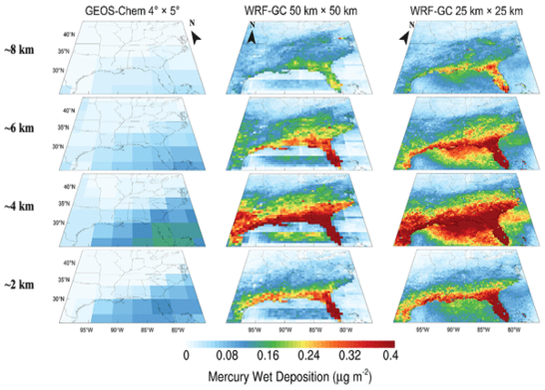WRF-GC-Hg V1.0
high-res Hg wet deposition simulation
Mercury is one of the most toxic pollutants in the environment, and wet deposition is a major process for atmospheric mercury to enter, causing ecological and human health risks. High-mercury wet deposition in the southeastern US has been a problem for many years. Here we employed a newly developed high-resolution WRF-GC model with the capability to simulate mercury to study this problem. We conclude that deep convection caused enhanced mercury wet deposition in the southeastern US.

WRF-GC-Hg v1.0 framework based on WRF-GC v1.0 (Lin et al., 2020).

Comparison of Hg wet deposition caused by convective precipitation from GEOS-Chem and WRF-GC at different levels and resolutions. From bottom to top: Hg wet deposition at ∼2, ∼4, ∼6, and ∼ 8 km, respectively. First column: GEOS-Chem 4° × 5° ; middle column: WRF-GC 50 km × 50 km; right column: WRF-GC 25 km × 25 km.
References
2022
- Modeling the high-mercury wet deposition in the southeastern US with WRF-GC-Hg v1. 0Geoscientific Model Development, 2022